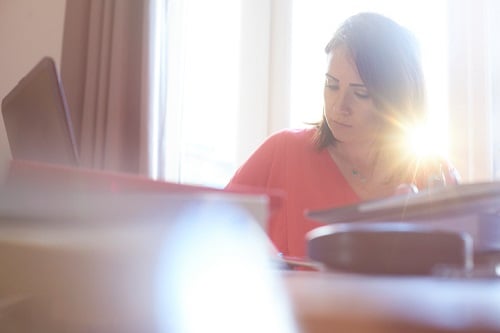Despite having less unsecured debt than male counterparts, ‘Jane Debtor’ faces an increased threat from three factors

The most recent bankruptcy study from personal insolvency firm Hoyes, Michalos & Associates revealed an outsized risk of insolvency among millennials in Ontario. As if that news weren’t concerning enough, the report also points to a significant risk within another important group.
“We continue to see a rise in women filing insolvency. As of 2018, 48.6% of insolvencies were filed by female debtors and the rate of insolvencies by gender is converging towards that of the overall adult population which, according to Statistics Canada, was 50.7% female as of July 1, 2018,” the study said.
Citing a previous study on women and bankruptcy that the firm published in 2017, the report said that women face a higher risk of filing insolvency than men due to three primary factors:
- Income disparity – Reflecting the more general trend of a gender wage gap, women debtors in Ontario earn less than their male counterparts. According to the firm, Jane Debtor takes home 4.7% less pay than Joe Debtor, and has household income that’s 6.9% lower.
- Difficult family circumstances – Based on the firm’s data, women in debt are much more likely to be living in a single-income household with dependents. More than one in four female debtors (26%) were lone parents, compared to roughly one in 12 male debtors (8%). Divorced or single, Jane Debtor is struggling financially; as the only breadwinner who takes home a lower household income than her male counterparts, she has to use debt to make ends meet.
- Higher exposure to student debt – In 2018, more than one in five (22%) female debtors filed insolvency with student loans, in contrast to just 13% of male debtors. The lower average income of women debtors compared to men, coupled with lower rate of consistent employment for women, creates a more formidable challenge for women debtors to settle their high student loan debt. Even if Joe and Jane Debtor are roughly the same age and have been repaying their loans over a similar time frame, Jane ends up with $15,171 in student loans at the time of her insolvency — 8.2% more than Joe.
The 2017 study also noted a rising share of bankruptcy filings by senior women. As of that year, 15% of all women filing bankruptcy were at least 60 years old; the number was slightly lower for men at 13%.
“The demographics of women filing bankruptcy in their senior years seem to illustrate that women are not as prepared to face the financial challenges of retirement as men,” the study said. It found that 74% of senior women filing bankruptcy in Ontario live alone, while 58% are retired and living on a fixed income. In addition, 21% are widowed, creating even further difficulties in adjusting a reduced household income.



